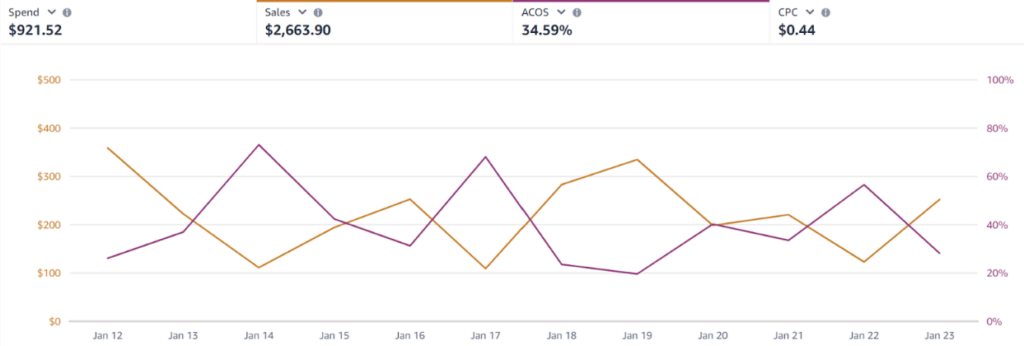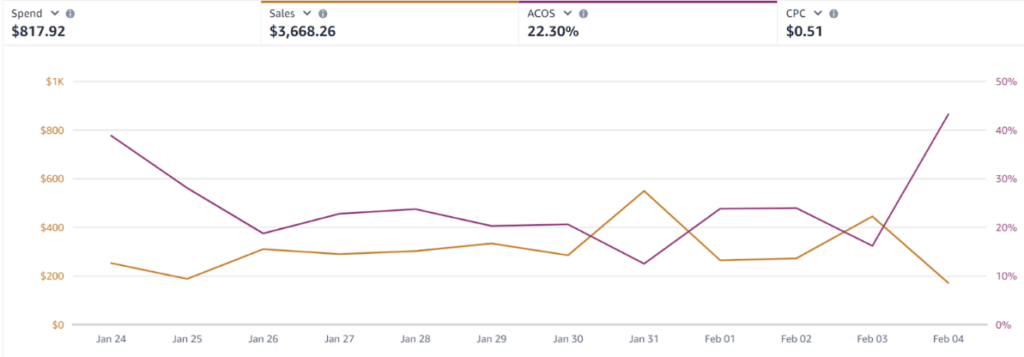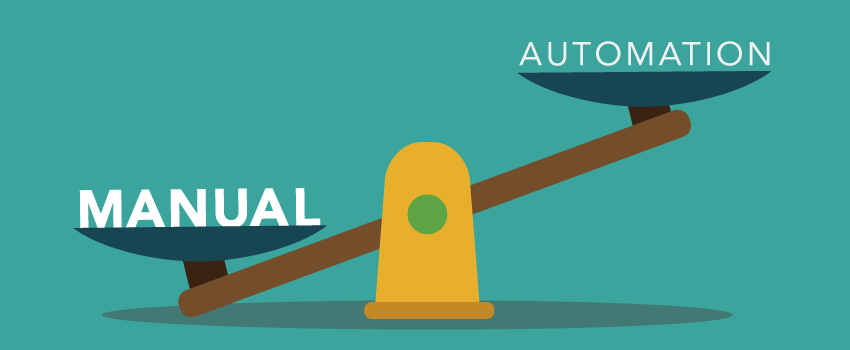When it comes to selling on Amazon, using the right advertising strategy can be the difference between success and failure. At AiHello, we’ve helped over 5000 sellers with their PPC and we’ve learned what works and what doesn’t over the years.
By the end of this article, you’ll learn the 12 most important Amazon advertising strategies we came across and how to implement them.
12 Best Amazon Advertising Strategies
| 1. | ASIN Prioritization | Best for when specific ASINs are performing better than others. |
| 2. | Organic Ranking Campaigns | Best for when you have a good CVR. |
| 3. | Dayparting | Best for when your category is highly affected by date and time. |
| 4. | Search Term Analysis | Best for accounts that use a lot of autos and broad match types. |
| 5. | Match Type Analysis | Best for accounts using all match types. |
| 6. | Net Profit Per Session Model | Best for when your growth is stalling. |
| 7. | Cross Ad Type Check | Best for ASINs that are too focused on either SP or SB. |
| 8. | Ad Spend Segmentation | Best for fixing high-ACoS campaigns. |
| 9. | Adjust Campaign Structure | Best for accounts with a lot of keywords. |
| 10. | Waterfall Campaigns | Best for large catalog accounts. |
| 11. | Break Down Your Ad Spend | Best for ASINs with under-utilized ad spends. |
| 12. | Budget Optimization | Best for companies with a lot of campaigns. |
1. ASIN Prioritization
Usually, 20% of ASINs produce 80% of revenue. So rather than advertising your entire catalog, you should focus on making the most out of the 20%.
Using this Amazon advertising strategy, we took a client’s ACoS from 45% to 20% while quadrupling sales from $60k/month to $250k/month.
Before AiHello they were spending $25k/month across dozens of ASINs. Some did well and some did not.
After AiHello, they were spending almost $50k per month, but $46k of it went to a single ASIN – that’s 92% of the budget being spent on one product.
This might sound counterintuitive, but the thing is, this product had the best reviews, the best CVR, and an extremely high search volume – much higher than a lot of other ASINs combined.
It was also spending 20% – 30% of the budget and bringing in 80% of total sales – so we went all in.
Today, this ASIN does multiple 7 figures in both ad sales and total sales. That’s a lot more than what the total account used to do.
Now, to implement this in your account and grow your sales, you need to identify ASINs with a higher sales contribution than spend contribution.
To find those super ASINs, we suggest you check business reports and order all your ASINs by sales. Then list the top products that together produce 80% of your current revenue.
Then head over to the “products” section of your campaign manager to check the sales and spend contribution of your best ASINs.
Once you do that, the next step is to use Helium10’s Black Box to get a rough estimate of how much your top 5 competitors sell and use that to gauge whether or not these ASINs have the potential to grow.
Once you find a high-performance ASIN – where the top competitors are selling at least 2-5x what you are, start investing more and more money into it so you can scale up and grow total sales.
2. Bidding On Almost-Ranked Keywords
When you bid on keywords that you have the potential to rank organically for, your ad spend generates both ad sales and organic sales.
There are two ways to go about this:
Strategy 1: Search Query Performance Report
It’s easy to rank organically on keywords where you have a higher conversion rate than your competitors.
To find these keywords, you can use the SQPR. It will show you your share of clicks and your share of sales on each search term.
If your share of sales is higher than your share of clicks, that means you have an above-average CVR and will most likely be able to rank for that keyword.
Strategy 2: Medium-rank Keywords from Helium10
It’s easier to go from rank 10 to rank 5 than it is to go from rank 40 to rank 5. That’s why we always focus on medium-rank keywords first.
To find your medium-rank keywords for any ASIN, put it in Cerebro and filter for keywords where you rank min 10 and max 30. Exclude keywords with a search volume below 100 and those with your brand name.
Now that you have your ‘almost-ranked keywords’ from SQPR and H10, place each one into its own SP keyword campaign using exact match. Add a high Top of Search boost and set high bids to maximize visibility.
After that, you can create more campaigns in other match types and use SBV with high bids to rank faster.
Then create a spreadsheet with all the keywords and update it with new rank, spending, and sales data every 10 days.
If you’re unable to launch rank campaigns for all the keywords because of your budget, remove any super high-volume, high-competition keywords from the list and try to focus on only the keywords with a massive CVR advantage or an organic rank that’s above 20.
3. Dayparting
Some categories have hours and days that perform much better/worse than others. We can adjust bids during these periods to increase sales or lower your Amazon advertising cost/.
With dayparting, you also maximize high-performance periods when your competitors run out of budget because they have ads running all day long.
In the screenshot below, you can see the ACOS (green line) goes up on the weekend and sales (orange line) go down. This is an example of when you’d daypart.
To get started with this Amazon advertising strategy, you need to know when you make the most sales. Check business reports to see what hours during the day you sell the most.
You should aggregate 5-20 days’ worth of data for this to make it as accurate as possible.
Once you have your peak hours, head over to the campaign manager and select the campaign you’d like to set up dayparting for.
Next, select “budget rules” and add a schedule-based budget rule that maximizes your spending during the high-performance hours you’ve identified. You can also manually pause/unpause your campaigns during peak/non-peak hours.
The major limitation here is that this data is account-level but the individual products have different buying times. It could be possible that some of your products sell best at midnight on weekends and some products sell better at 5 am on Mondays.
The only way you could figure this out is if you went through the sales history of all of your products and analyzed the sales trend.
And even if you find the sales trend, it’s still a pain to go in and set up rule-based automation for your whole catalog. It might work when you have one or two products. But as you grow in size, it’s impossible to daypart properly.
This is why automating dayparting has become an option with several AI tools, including our own.
The AI reads hourly data on a product level from Amazon Marketing Stream and uses that to identify trends in ACoS, Spend, Sales, CPC, and CVR and changes your bids intra-day to get you the best performance automatically.
This means you don’t have to spend hours trying to figure out what time each product performs best or worry about how to set up schedule-based rules that maximize your budget for each ASIN.
4. Search Term Analysis
If you have been running PPC campaigns for some time, this Amazon ads strategy will help you find profitable search terms that you might have missed and unprofitable ones that you need to negate.
To begin, download your search term report for the last 30 days, and add it to a Google sheet.
This is what a search term report looks like:
Next, segment by:
- The targeting types – AUTO, keyword, and ASIN.
- Branded and unbranded search terms.
- Search terms that have made at least one sale but haven’t been added as keywords.
- Search terms that have spent the equivalent of the product average order value but have not sold anything.
The filters for targeting types, branded and unbranded, are for analyzing performance. For example, with targeting types segmented, you can see how you perform on each type of targeting and allocate spend based on that. With branded and unbranded, you can see how many new-to-brand customers you’re getting and how you’re performing on branded and generic search terms
Good search terms that have not been added as keywords are for harvesting. You can copy them into other manual campaigns and target them directly in all match types.
You can manually download your search term reports every week to find new keywords.
For search terms that have spent product AOV but have yet to generate any sales, you should negate them to save ad spend. You can do this by going through your campaigns one by one to find them.
Or you can have both keyword harvesting and negation set up automatically across thousands of campaigns with AiHello.
To set up harvesting with AiHello, simply select the campaign you want to harvest from and link it to the manual campaign you want the keyword to be added to from the autopilot settings.
You can also use AiHello’s negation feature to automatically prevent your ads from showing up for search terms that have spent more than product AOV but have not generated any sales.
For example, if you select 1.5 as your benchmark and your cost per customer acquisition is $8, AiHello will automatically negate any keyword that spends $12 ($8 x 1.5) without making at least one sale.
5. Match Type Analysis
When you break down performance by match type, you can understand your numbers better and allocate ad spend to get the highest revenue possible.
To use this strategy, head over to your targeting tab under the campaign manager and filter targets by broad, phrase, and exact match.
Next, compare ACoS, CPC, and CVR to see if there’s any difference that you can use to make effective adjustments.
For example, if the CVR is higher for certain match types, you can spend more on those targets to potentially improve sales or ACoS.
You can also check if there’s any difference between the number of targets in each match type. Usually, having more targets in one match type means you can duplicate some keywords in other match types to get more reach.
6. Net Profit Per Session Model
The more sessions you drive, the lower your net profit per session will be – especially when your products are mature. To increase profits, you need to invest in ASINs that produce the most net profit per session.
For example, if you currently have 2000 sessions on an ASIN and you spend $2000 to get another 4000 sessions, your cost/session on those additional 4000 would be $ 0.5.
If you convert 10% of those 4000 sessions, you’ll sell 400 units. And if your 400 units have a combined gross profit of $4000 and you spent $2000 on ads for them then your net profit ends up as $2000.
Now, if you keep spending more to increase your sessions, one of two things will happen:
1. You’ll exhaust your high-converting audiences and move into audiences with a lower unit session percentage.
2. Your cost per session will go up.
This is what this would look like:
You spend $2000 to go from 7000 sessions to 11000. Those additional 4000 sessions convert at 7%. You sell 280 units with a gross profit of $2800, after ads you net $800.
So, if you’re looking to add some extra dollars to your ad budget, don’t just put it in an ASIN that is performing well.
Instead, calculate your net profit for your best ASINs and invest in the one with the highest potential.
Here’s how to calculate your net profit per session:
Total revenue/Total sessions = Revenue per session
Revenue per session – Selling costs – Landed cost = Gross profit per session
Ad spend/sessions = Cost per session
Gross profit per session – Cost per session = Net profit per session
7. Cross Ad Type Check
This strategy allows you to find high-performing keywords that you’re only using in SP or SB and duplicate them to make more sales.
You need to first check all the targets in each ad type. To do this, go to the campaigns tab and filter your campaigns by ad type. Then export the list of campaigns under each ad type.
Next, go to the targeting tab and filter by campaign. Put the campaign names for each ad type in to see their targets.
Once you export all the targets for each one separately, you can compare them in Excel and add all the high-performing keywords missing for each ad type.
To consider a keyword as high-performing, it should have 3 or more sales at an average or below-average ACoS.
8. Ad Spend Segmentation
This Amazon marketing strategy helps you see your losing and winning campaigns so you can take action to improve them. Here’s how to implement it:
Open two tabs on the campaign manager and add a filter for each one. Filter one should be ACoS equal to or greater than the account average and filter two should be ACoS equal to or lower than the account average.
Group 1 = every campaign that’s raising your ACoS
Group 2 = every campaign that’s lowering your ACoS
The first thing you want to do with this data is figure out how much of your spend and sales come from each group. Each group will generally be around 40-60% of sales but usually, the high ACoS group will spend more.
Next, try to find commonalities between the high ACoS campaigns. Are they all the same ad type? Targeting type? Match type? Are they all autos?
Or maybe they’re all for the same ASIN? Or do they all use very broad keywords? And so on.
Here’s a real-life example:
No filter:
Campaigns under 35% ACoS:
Campaigns above 35% ACoS:
The beauty of this strategy is that it simplifies things. Instead of “my ACoS is rising and I don’t know what to do.” It becomes “My auto campaigns are burning money, let me add negatives and lower my bids.”
9. Adjust Campaign Structure
Perfecting campaign structure can be tricky. You’ll need to invest an ample amount of time and effort to ensure that your campaigns are appropriately structured, especially if you have a large catalog.
One of the major flaws we see in many campaigns is keyword stuffing. It is broadly defined as having more than 15 keywords per campaign. But it also refers to mixing match types in 1 campaign and mixing branded and unbranded keywords.
Here are the 3 main issues with keyword stuffing:
- You can only set budgets on the campaign level, so if you give a campaign a $50 budget and you have 400 keywords you’ll have very little control over where it goes.
- Mixing match types and branded and unbranded makes it very difficult to track performance.
- You can’t set placement boosts on a keyword level, only at a campaign level. So having too many keywords in a campaign means your placement boosts won’t be accurate.
Here’s what you should do instead:
Create single-keyword campaigns for your hero keywords and 5-10 keyword regular campaigns for everything else, and make sure to only put keywords with a similar SV together in these campaigns.
If you follow this structure your spend will go up, you’ll get more reach and your sales will go up as a result. It also gives you much better control over spend which makes ACoS reduction easier.
10. Waterfall Campaigns
Waterfall campaigns are an easy-to-set-up and low-maintenance way to add low ACoS sales to your account. They’re especially useful if you have a large catalog and can sometimes add up to 7 figures of revenue per year.
All you have to do is set up an auto campaign with one ad group for each SKU you have. You can divide these auto campaigns by product similarity instead of having all of your SKUs in one campaign.
Next, set 10-25 cent bids for each target. Use down-only bidding and either put no placement boost or a minor one.
If you have higher ASP products, you can use up & down and a more significant placement boost to be more aggressive.
After that, you’ll start seeing each ad group get a trickle of clicks each month. Say 4-20 each.
And if you multiply that by 2000, 3000, or 4000 ad groups, the numbers add up very quickly.
Here’s an example of how Waterfall campaigns helped us generate ad sales at a relatively low ACoS:
11. Break Down Your Ad Spend
Many sellers don’t know what their ad distribution is, but when you break down your ad spend you’re more likely to see where you’re over/under spending and fix it.
You should break down spend by % going into each match type, % going into each ad type, % going into each targeting type, and % going into each ASIN.
To do this manually, follow these steps:
- Go over to the targeting tab under campaign manager.
- Export results and filter them on Excel by match type and targeting type.
- Then head over to the campaign tab to filter campaigns by ad type.
- Check the product report to get ASIN data.
- Fix any imbalance you find.
Here’s how we used this exact strategy to increase our clients’ sales by 27% at a 22% ACoS in 12 days.
Before: 12th Jan – 23rd Jan

After: 24th Jan – 4th Feb

When we onboarded their account, we analyzed their spending and discovered that the majority of their ad dollars were going toward poor-performing ASINs and broad keywords.
We also discovered that only 3 campaigns were active and they were stuffed with more than 30 keywords each. This means both good and bad targets were put together in the same campaign, making optimization difficult.
Separate campaigns with a lower number of targets were created for each set of relevant keywords to give better us better control over ad spend distribution. Top-performing search terms were assigned dedicated campaigns too.
In 12 days, their ACoS dropped from 34% to 22% and sales increased from $2.6k to $3.6k. Sales were more consistent too and making optimizations was much simpler.
12. Budget Optimization
This Amazon sponsored ads strategy ensures that high-performing campaigns don’t go out of budget, potentially increasing sales by 5-7 figures at the same ACoS.
Here’s how to do it:
Go into the budgets tab.
Filter campaigns by ACoS (less than the account average) to see if you have low ACoS campaigns that are running out of budget.
If you do, you should increase their budget by at least 50%. This can be done as a bulk action in 2 clicks.
You can also filter by sales to see if your top-selling campaigns are running out of budget.
If they are, you should adjust their budgets too.
Final thoughts
Success in Amazon advertising demands smart strategies. The tactics we’ve explored (trusted by thousands) show you how to advertise on Amazon and improve your sales with the right ads strategy.
Whether it’s adjusting budgets or utilizing automated tools, each strategy plays a role in improving your sales and reducing your ACoS. So, cheers to more clicks and dollars. Happy selling!

